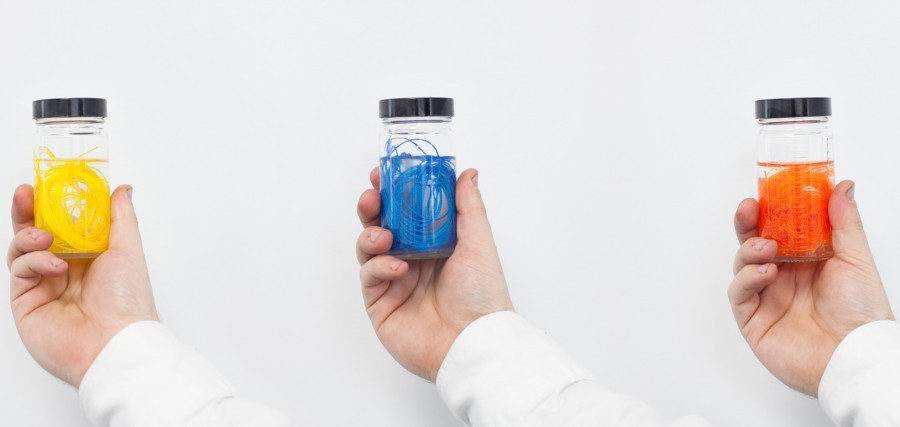
We get questions every week from manufacturers who want to use one or more ends of a colored yarn or thread for product identification (marker threads) and for production marketing and differentiation. An understanding of the types of dyed yarns available, and the advantages and disadvantages of each is crucial to product performance and design.
There are two main processes commonly used to create colored yarns: package dyed and solution dyed (also called dope dyed). Let’s take a look at each:
Package Dyed Yarns
Package dying is a mature technology that is one of the most commonly used methods of yarn dying. This eight step process involves dying natural yarns that have been wound on perforated spools that are dyed in a pressurized tank.
Package Dyed Advantages
- Small lot sizes are common and possible using package dying
- Custom color and shade matching is possible due to the smaller lot sizes than dope dying
- These factors make package dying good for flexibility and color development
Disadvantages
- Color uniformity is difficult to achieve from lot to lot, creating waste or product variation
- Colorfastness not as good as solution dying leading to bleeding or transfer of dye onto other materials during subsequent operations as well as shade changes during downstream processing
- Fading and changes to color more likely from package dyed yarns
- Eight step process has a longer lead time than solution dyed yarn
- Energy and water usage costs are very high for package dyed yarn
While package dying is adequate for most materials, thick, high twist yarns and threads may not allow for good dye penetration, and materials exposed to outdoor environments are likely to experience fading and shade changes.
Solution or Dope Dyed Yarns
Solution or doped dyed yarns are created by adding a masterbatch colorant to the polymer melt in spinning or extrusion. This results in fibers and filaments that are fully impregnated with pigment coming out of the spinnerets in a one step process.
Advantages
- Solution Dyed yarn is highly resistant to UV fade and shade changes
- Solution dyed yarns are fully uniform in color and typically do not vary from lot to lot
- Solution dyed yarns are colorfast, resistant to multiple washings and mild bleach solutions
- Energy costs for doped dyed yarns is the same as natural yarns
- More environmentally friendly since no water is used in the solution dying process
Disadvantages
- Large lot sizes needed for solution dyed yarns, usually 4500 KGS or 10000 Lbs.
- Fewer colors available, custom colors impossible without very large lot quantities
- Depending on the fiber being produced, potential for slightly lower tenacity for solution dyed yarns
For primary colors like black, yellow, green, red, and blue where precise color matching is not required, solution dyed yarns are recommended. Solution dyed yarns are also ideal for use in producing bonded polyester and nylon sewing threads for both indoor and outdoor applications, since there is little possibility of dye bleeding and UV fading. The environmental impact of package dying with high water usage and energy costs is also leading many manufacturers to change to solution dyed yarns to increase their sustainability scores.
Choosing the right kind of dyed yarn is an important decision to avoid costly product failures and warranty claims. As a engineered yarn design and manufacturing firm, Service Thread processes both types of dyed yarn and can help you evaluate the right type for your product or job.
Need help in determining what to use? Get help now from our technical group.




